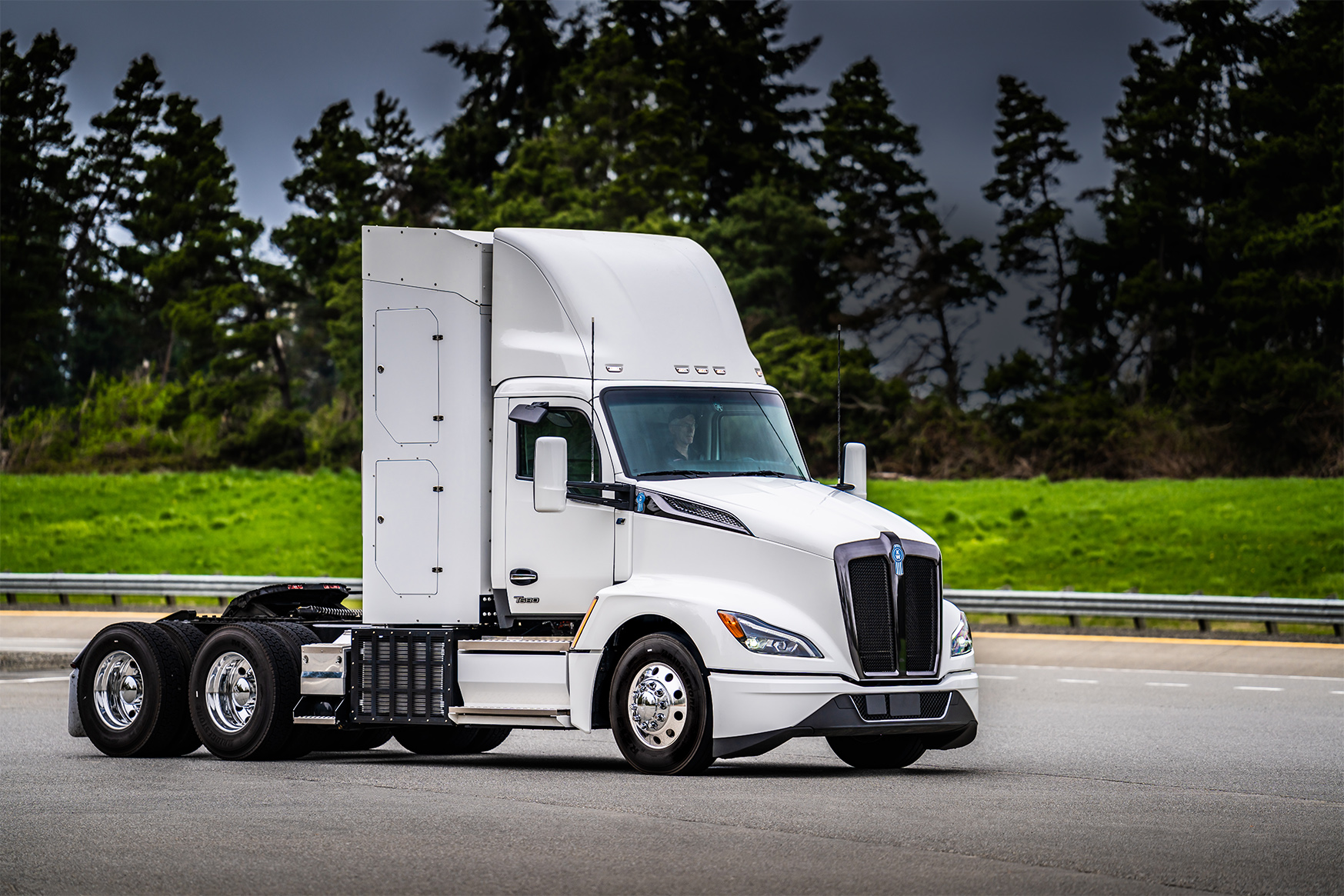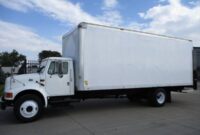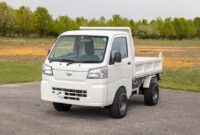Kenworth Box Trucks For Sale: Your Ultimate Guide to Finding the Perfect Workhorse pickup.truckstrend.com
In the dynamic world of logistics, delivery, and specialized services, the humble box truck stands as an indispensable workhorse. For businesses and individuals seeking unparalleled reliability, robust performance, and a legacy of quality, a Kenworth box truck often rises to the top of the list. Synonymous with heavy-duty trucking, Kenworth extends its engineering excellence to the box truck segment, offering vehicles that are built to last and designed to perform.
This comprehensive guide delves into everything you need to know about Kenworth box trucks for sale, whether you’re a first-time buyer or looking to expand your fleet. From understanding their unique advantages to navigating the purchasing process, we’ll equip you with the knowledge to make an informed decision and secure a vehicle that will reliably serve your needs for years to come.
Kenworth Box Trucks For Sale: Your Ultimate Guide to Finding the Perfect Workhorse
Understanding Kenworth Box Trucks: A Legacy of Reliability
Kenworth, a division of PACCAR, has long been revered in the trucking industry for producing some of the most durable and high-performing heavy-duty trucks on the road. This reputation for quality, engineering prowess, and driver comfort extends seamlessly to their medium-duty offerings, which form the basis for Kenworth box trucks.
A Kenworth box truck typically consists of a robust Kenworth chassis (such as the T270, T370, or even some T400 series models) paired with a specialized cargo box. These vehicles are designed for a variety of applications, from local package delivery and furniture transport to refrigerated goods distribution and specialized service operations. What sets Kenworth apart from many competitors in the box truck market is its commitment to using heavy-duty components, powerful PACCAR engines (or Cummins alternatives), and driver-centric cabs that minimize fatigue and maximize productivity. When you invest in a Kenworth, new or used, you’re buying into a legacy of trucks engineered for the long haul, designed to handle demanding daily operations with minimal downtime.
Key Considerations When Buying a Kenworth Box Truck
Purchasing a box truck, especially a used one, requires careful consideration of several factors to ensure it aligns perfectly with your operational needs and budget.
1. Purpose and Application
Before anything else, define what the truck will be used for.
- Local Delivery vs. Regional Haul: Will it be making frequent stops in urban areas or covering longer distances between towns? This impacts engine size, transmission type, and cab features.
- Type of Cargo: What are you transporting? Dry goods, refrigerated items, heavy equipment, delicate electronics? This dictates the type of box body needed.
- Volume and Weight: How much cubic feet of space do you require, and what is the maximum payload weight?

2. Box Type and Size

The cargo box is arguably the most critical component of a box truck, dictating its utility.
- Dry Van: The most common type, enclosed and weather-resistant, ideal for general freight.
- Refrigerated (Reefer): Insulated box with a refrigeration unit for temperature-sensitive goods.
- Curtainside: Combines the security of a dry van with the accessibility of a flatbed, allowing side loading.
- Flatbed with Sides: More versatile for irregular cargo, often with removable sides.
- Length: Common lengths range from 16 to 26 feet, but custom lengths exist.
- Width & Height: Standard widths are 96 or 102 inches; interior height varies.
- Liftgate: Essential for loading/unloading heavy or bulky items without a dock. Check capacity, functionality, and platform type (tuckaway, rail, or cantilever).

3. Gross Vehicle Weight Rating (GVWR)
GVWR is the maximum operating weight of the truck as determined by the manufacturer, including the vehicle, fuel, driver, passengers, and cargo.
- Class 3-5 (10,001-19,500 lbs): Often used for lighter-duty deliveries. May not require a Commercial Driver’s License (CDL) in most states. Kenworth’s T170/T270 models can fall into this range.
- Class 6-7 (19,501-33,000 lbs): Medium-duty trucks suitable for heavier payloads and more demanding routes. Often requires a CDL, depending on state regulations and actual loaded weight. Kenworth T270/T370 models are common here.
- Class 8 (33,001+ lbs): Heavy-duty trucks, primarily semi-trucks, but some very large box trucks might approach this. Always requires a CDL.
Understanding GVWR is crucial for legal operation, insurance, and ensuring the truck can handle your desired payload.
4. Engine and Transmission
- Engine: Kenworth box trucks primarily use diesel engines (PACCAR PX-7, PX-9, or Cummins ISB/ISC/ISL). Consider horsepower and torque for your typical loads and terrain. Fuel efficiency varies greatly by engine, load, and driving style.
- Transmission: Automatic transmissions (like Allison) are popular for urban delivery due to ease of use and reduced driver fatigue. Manual transmissions offer more control and can sometimes be more fuel-efficient for experienced drivers on long hauls.
5. Mileage, Age, and Maintenance History
- Mileage & Age: High mileage isn’t always a deal-breaker if the truck has been meticulously maintained. Conversely, low mileage on an old truck might indicate it sat unused, which can lead to its own issues. Look for a balance.
- Maintenance Records: This is perhaps the single most important factor when buying used. Comprehensive service records indicate a responsible previous owner and allow you to anticipate future maintenance needs. Look for oil changes, filter replacements, brake service, tire rotations, and any major repairs.
6. Condition Assessment
- Exterior: Inspect for rust (especially on the frame and box supports), dents, scratches, and signs of accident damage. Check the integrity of the box itself – no leaks, punctures, or sagging.
- Interior: Examine the cab for wear and tear on seats, dashboard, and controls. Test all electronics, lights, and HVAC. A well-maintained interior often signals a driver who cared for the truck.
- Tires: Check tread depth and even wear. Uneven wear can indicate alignment or suspension issues.
- Brakes and Suspension: Look for worn brake pads, calipers, or air leaks in air brake systems. Check for sagging springs or worn shocks.
- Engine & Drivetrain: Listen for unusual noises during a test drive. Check for leaks. A pre-purchase inspection by a qualified mechanic is non-negotiable.
Benefits of Choosing a Used Kenworth Box Truck
Opting for a used Kenworth box truck offers several compelling advantages:
- Significant Cost Savings: Used trucks are considerably cheaper than new ones, allowing businesses to acquire high-quality assets without the steep depreciation hit.
- Proven Durability & Longevity: Kenworth trucks are built to last. A well-maintained used model can still offer many years of reliable service.
- Immediate Availability: Unlike new trucks that often have production lead times, a used truck can be acquired and put into service almost immediately.
- Lower Insurance Premiums: Generally, older vehicles have lower insurance costs.
- Established Performance: With a used truck, you can often find reviews and feedback on specific models and engine types, giving you a better idea of real-world performance and common issues.
Where to Find Kenworth Box Trucks For Sale
The market for used commercial trucks is vast, offering several avenues to find your ideal Kenworth:
- Commercial Truck Dealerships: Authorized Kenworth dealerships often have a selection of used trucks, including trade-ins. They typically offer certified pre-owned options, financing, and service support.
- Specialized Used Truck Dealers: Many dealerships focus solely on used commercial vehicles, offering a wide range of makes and models, including Kenworth.
- Online Marketplaces: Websites like TruckPaper.com, CommercialTruckTrader.com, MyLittleSalesman.com, and eBay Motors are excellent resources for browsing thousands of listings from dealers and private sellers nationwide.
- Auctions: Public and private commercial vehicle auctions can offer good deals, but they require a keen eye for inspection as "as-is, where-is" sales are common.
- Private Sellers & Fleet Sales: Directly purchasing from a business upgrading its fleet or an individual owner can sometimes yield better prices, but due diligence is even more critical here.
The Buying Process: A Step-by-Step Guide
- Define Your Budget & Needs: Be clear about your maximum spend and essential features.
- Research & Shortlist: Use online resources to identify potential trucks that meet your criteria.
- Initial Inquiry: Contact sellers for detailed information, additional photos, and, most importantly, maintenance records.
- On-Site Inspection: Visit the truck in person. Visually inspect everything mentioned in the "Condition Assessment" section.
- Pre-Purchase Inspection (PPI): This is non-negotiable for a used commercial truck. Hire an independent, certified heavy-duty mechanic to thoroughly inspect the truck, including diagnostics, fluid analysis, and a road test. This can uncover hidden issues and save you thousands in future repairs.
- Test Drive: Take the truck for an extended test drive. Pay attention to how it handles, accelerates, brakes, and shifts. Listen for unusual noises. Test the liftgate if applicable.
- Negotiation: Armed with your inspection findings, negotiate the price. Be prepared to walk away if the deal isn’t right.
- Financing & Insurance: Secure your financing (from a bank, credit union, or specialized truck lender) and arrange for commercial truck insurance before taking possession.
- Paperwork & Transfer: Ensure all titles, registrations, and bills of sale are correctly completed and transferred. Verify the VIN matches all documents.
Price Table: Kenworth Box Trucks For Sale (Estimated Ranges)
Prices for Kenworth box trucks can vary wildly based on year, mileage, condition, engine, transmission, box type, and specific features. The table below provides general estimated ranges for commonly available used models.
| Model Series | Year Range | GVWR Range (lbs) | Box Length Range (ft) | Engine Type (Common) | Estimated Price Range (USD) | Key Features |
| :———– | :——— | :————— | :——————– | :——————- | :————————– | :—————————————————————————————————————————————————————————————————————————————————————————————————————————————————————————————————————————————————————————————————————————————————————————————————————————————————————————————————————————————————————————————————————————————————————————————————————————————————————————————————————————————————————————————————————————————————————————————————————————————————————————————————————————————————————————————————————————————————————————————————————————————————————————————————————————————————————————————————————————————————————————————————————————————————————————————————————————————————————————————————————————————————————————————————————————————————————————————————————————————————————————————————————————————————————————————————————————————————————————————————————————————————————————————————————————————————————————————————————————————————————————————————————————————————————————————————————————————————————————————————————————————————————————————————————————————————————————————————————————————————————————————————————————————————————————————————————————————————————————————————————————————————————————————————————————————————————————————————————————————————————————————————————————————————————————————————————————————————————————————————————————————————————————————————————————————————————————————————————————————————————————————————————————————————————————————————————————————————————————————————————————————————————————————————————————————————————————————————————————————————————————————————————————————————————————————————————————————————————————————————————————————————————————————————————————————————————————————————————————————————————————————————————————————————————————————————————————————————————————————————————————————————————————————————————————————————————————————————————————————————————————————————————————————————————————————————————————————————————————————————————————————————————————————————————————————————————————————————————————————————————————————————————————————————————————————————————————————————————————————————————————————————————————————————————————————————————————————————————————————————————————————————————————————————————————————————————————————————————————————————————————————————————————————————————————————————————————————————————————————————————————————————————————————————————————————————————————————————————————————————————————————————————————————————————————————————————————————————————————————————————————————————————————————————————————————————————————————————————————————————————————————————————————————————————————————————————————————————————————————————————————————————————————————————————————————————————————————————————————————————————————————————————————————————————————————————————————————————————————————————————————————————————————————————————————————————————————————————————————————————————————————————————————————————————————————————————————————————————————————————————————————————————————————————————————————————————————————————————————————————————————————————————————————————————————————————————————————————————————————————————————————————————————————————————————————————————————————————————————————————————————————————————————————————————————————————————————————————————————————————————————————————————————————————————————————————————————————————————————————————————————————————————————————————————————————————————————————————————————————————————————————————————————————————————————————————————————————————————————————————————————————————————————————————————————————————————————————————————————————————————————————————————————————————————————————————————————————————————————————————————————————————————————————————————————————————————————————————————————————————————————————————————————————————————————————————————————————————————————————————————————————————————————————————————————————————————————————————————————————————————————————————————————————————————————————————————————————————————————————————————————————————————————————————————————————————————————————————————————————————————————————————————————————————————————————————————————————————————————————————————————————————————————————————————————————————————————————————————————————————————————————————————————————————————————————————————————————————————————————————————————————————————————————————————————————————————————————————————————————————————————————————————————————————————————————————————————————————————————————————————————————————————————————————————————————————————————————————————————————————————————————————————————————————————————————————————————————————————————————————————————————————————————————————————————————————————————————————————————————————————————————————————————————————————————————————————————————————————————————————————————————————————————————————————————————————————————————————————————————————————————————————————————————————————————————————————————————————————————————————————————————————————————————————————————————————————————————————————————————————————————————————————————————————————————————————————————————————————————————————————————————————————————————————————————————————————————————————————————————————————————————————————————————————————————————————————————————————————————————————————————————————————————————————————————————————————————————————————————————————————————————————————————————————————————————————————————————————————————————————————————————————————————————————————————————————————————————————————————————————————————————————————————————————————————————————————————————————————————————————————————————————————————————————————————————————————————————————————————————————————————————————————————————————————————————————————————————————————————————————————————————————————————————————————————————————————————————————————————————————————————————————————————————————————————————————————————————————————————————————————————————————————————————————————————————————————————————————————————————————————————————————————————————————————————————————————————————————————————————————————————————————————————————————————————————————————————————————————————————————————————————————————————————————————————————————————————————————————————————————————————————————————————————————————————————————————————————————————————————————————————————————————————————————————————————————————————————————————————————————————————————————————————————————————————————————————————————————————————————————————————————————————————————————————————————————————————————————————————————————————————————————————————————————————————————————————————————————————————————————————————————————————————————————————————————————————————————————————————————————————————————————————————————————————————————————————————————————————————————————————————————————————————————————————————————————————————————————————————————————————————————————————————————————————————————————————————————————————————————————————————————————————————————————————————————————————————————————————————————————————————————————————————————————————————————————————————————————————————————————————————————————————————————————————————————————————————————————————————————————————————————————————————————————————————————————————————————————————————————————————————————————————————————————————————————————————————————————————————————————————————————————————————————————————————————————————————————————————————————————————————————————————————————————————————————————————————————————————————————————————————————————————————————————————————————————————————————————————————————————————————————————————————————————————————————————————————————————————————————————————————————————————————————————————————————————————————————————————————————————————————————————————————————————————————————————————————————————————————————————————————————————————————————————————————————————————————————————————————————————————————————————————————————————————————————————————————————————————————————————————————————————————————————————————————————————————————————————————————————————————————————————————————————————————————————————————————————————————————————————————————————————————————————————————————————————————————————————————————————————————- Kenworth Box Trucks For Sale: Your Guide to a Smart Investment
In the realm of commercial vehicles, few names resonate with such profound trust and enduring quality as Kenworth. Renowned for its heavy-duty haulers that conquer the nation’s highways, Kenworth also extends its engineering prowess to the medium-duty sector, producing robust and reliable chassis ideal for box truck applications. For businesses and individuals seeking a dependable workhorse for local deliveries, specialized services, or general cargo transport, a Kenworth box truck for sale represents a strategic investment in efficiency and longevity.
This comprehensive guide is designed to serve as your ultimate resource in navigating the market for Kenworth box trucks. We’ll explore the inherent advantages of choosing a Kenworth, delve into critical considerations for purchasing, outline the buying process, and provide actionable insights to ensure you find the perfect vehicle that meets your operational demands and budgetary constraints.
The Enduring Appeal of Kenworth Box Trucks
At its core, a Kenworth box truck marries a sturdy Kenworth chassis—typically from its popular T270, T370, or even some T440 series—with a custom-built cargo box. This combination results in a vehicle celebrated for its:
- Unrivaled Durability: Kenworth trucks are built tough. Their frames, axles, and suspension systems are engineered to withstand the rigors of daily commercial use, ensuring a long operational life.
- Reliable Performance: Powered by robust PACCAR engines (PX-7, PX-9) or reliable Cummins alternatives (ISB, ISC), these trucks offer ample horsepower and torque for various hauling needs, coupled with respectable fuel efficiency for their class.
- Driver Comfort and Ergonomics: Kenworth cabs are designed with the driver in mind, featuring comfortable seating, intuitive controls, excellent visibility, and a quiet ride, all contributing to reduced fatigue and increased productivity.
- High Resale Value: Thanks to their reputation for reliability and longevity, Kenworth trucks generally hold their value well in the used market, offering a strong return on investment.
- Versatility: With a variety of chassis configurations and customizable box options (dry van, refrigerated, curtainside, etc.), Kenworth box trucks can be tailored to an extensive range of industries, from last-mile delivery to construction support.
For businesses looking to minimize downtime and maximize operational efficiency, investing in a Kenworth box truck, new or used, is often a decision that pays dividends over time.
Critical Considerations When Seeking Kenworth Box Trucks For Sale
A well-informed purchase begins with a clear understanding of your specific needs and a meticulous evaluation of potential vehicles.
1. Defining Your Operational Requirements
- Intended Use: What exactly will the truck be doing? Local urban deliveries, inter-city transport, construction site support, or specialized service? This dictates required features, engine size, and maneuverability.



